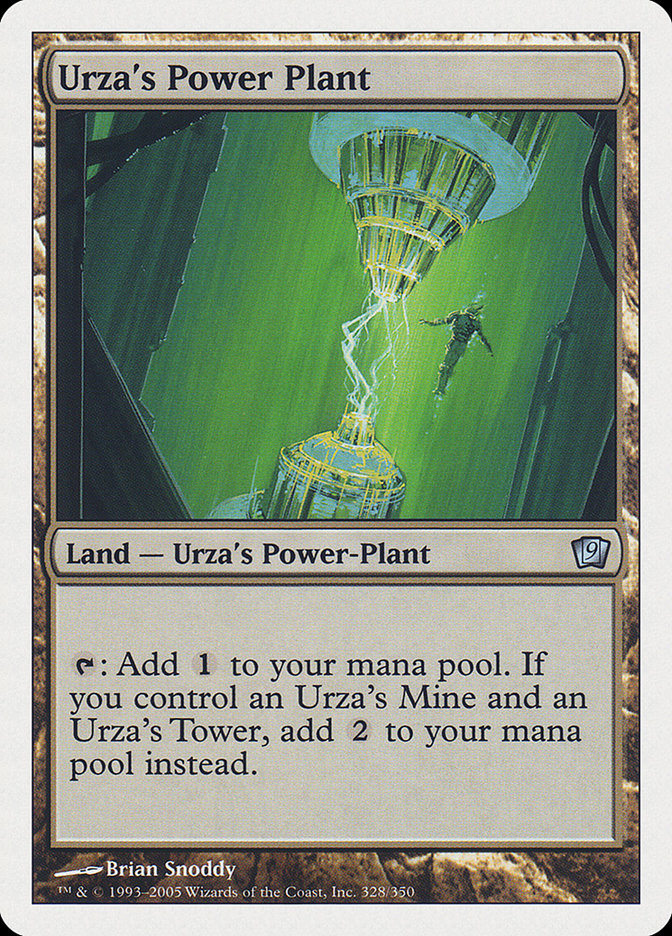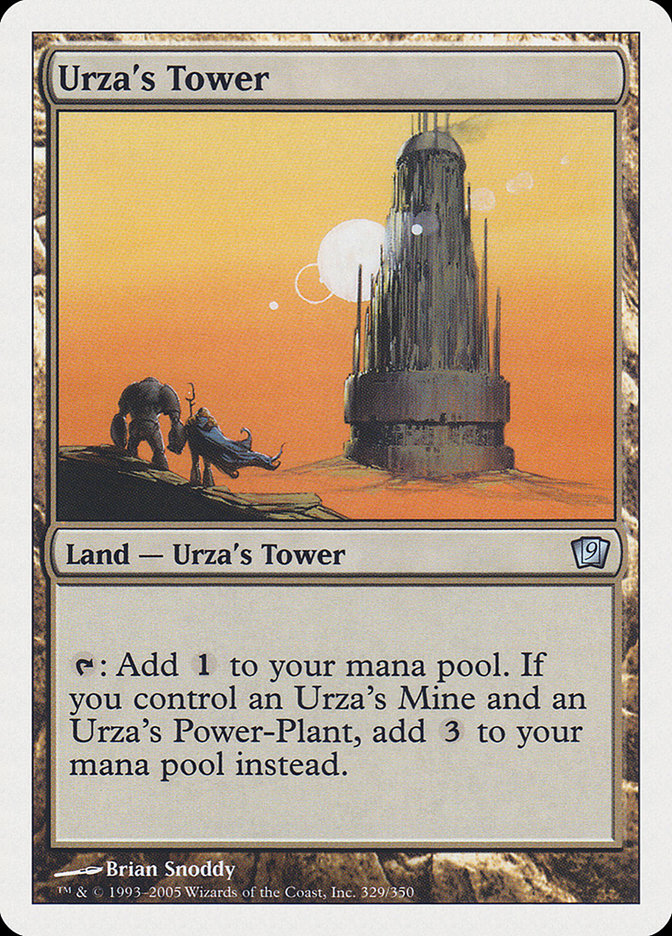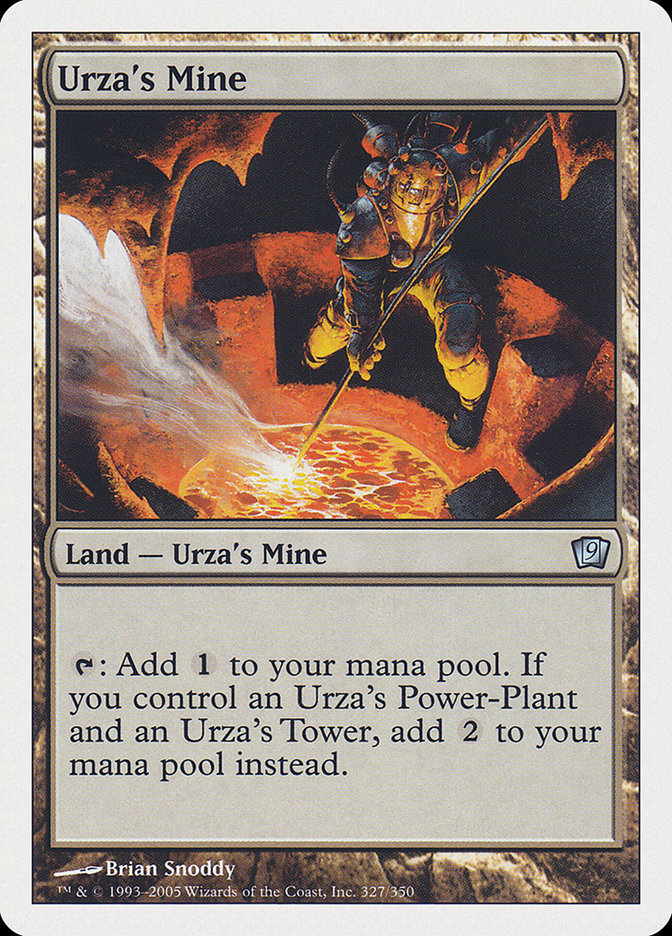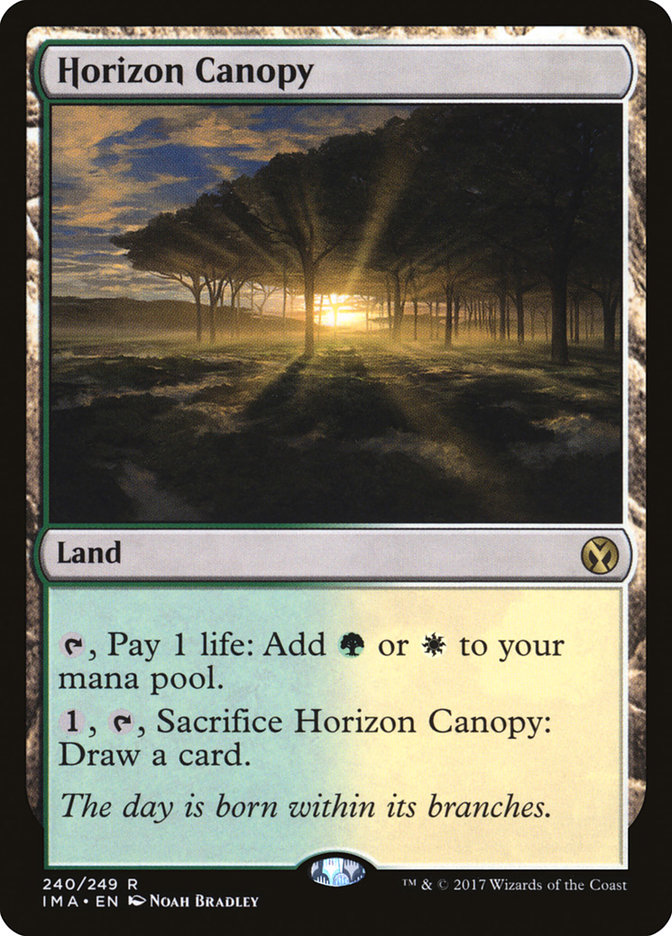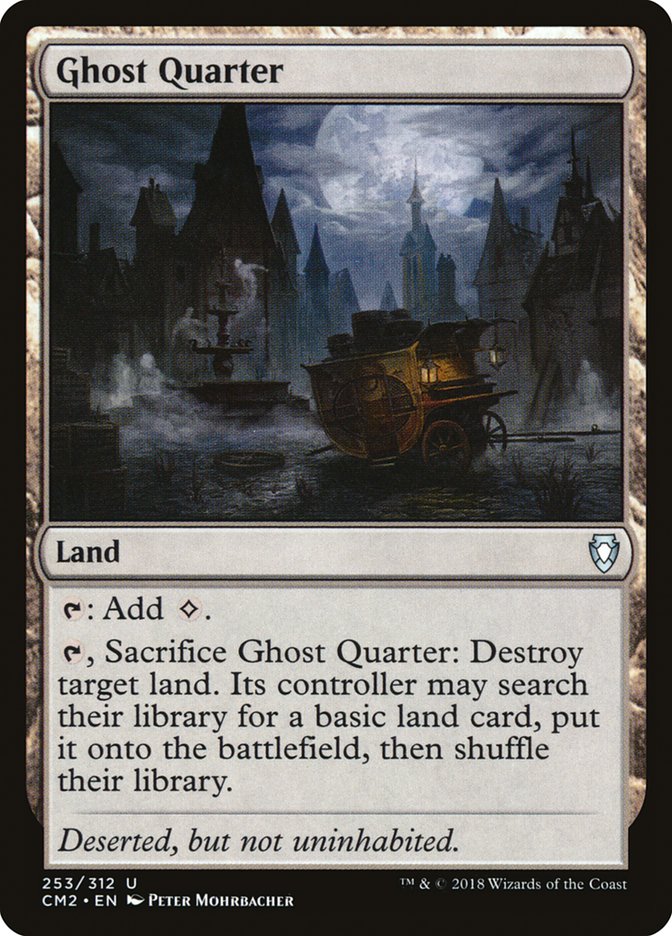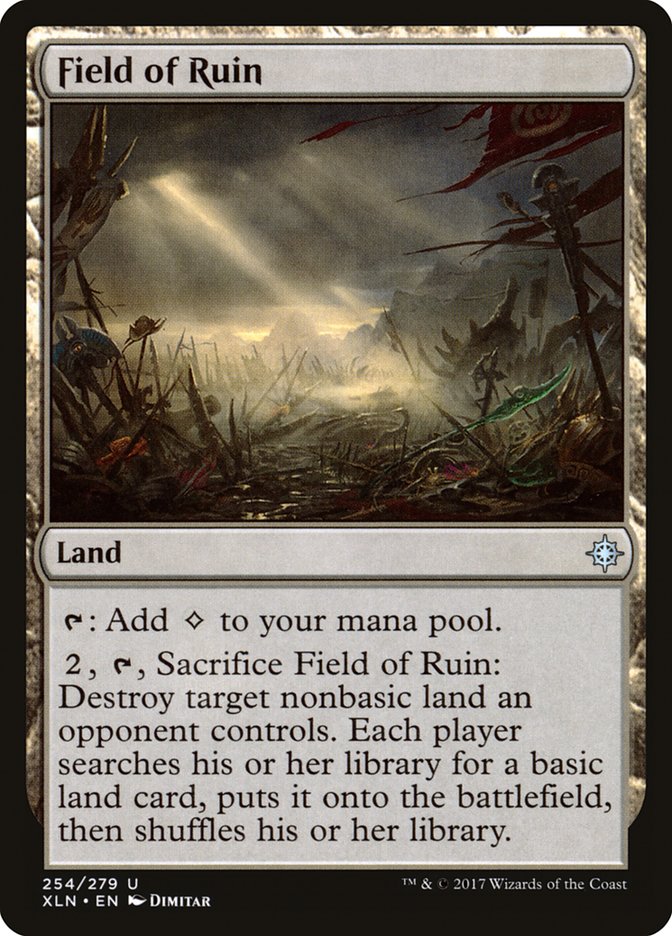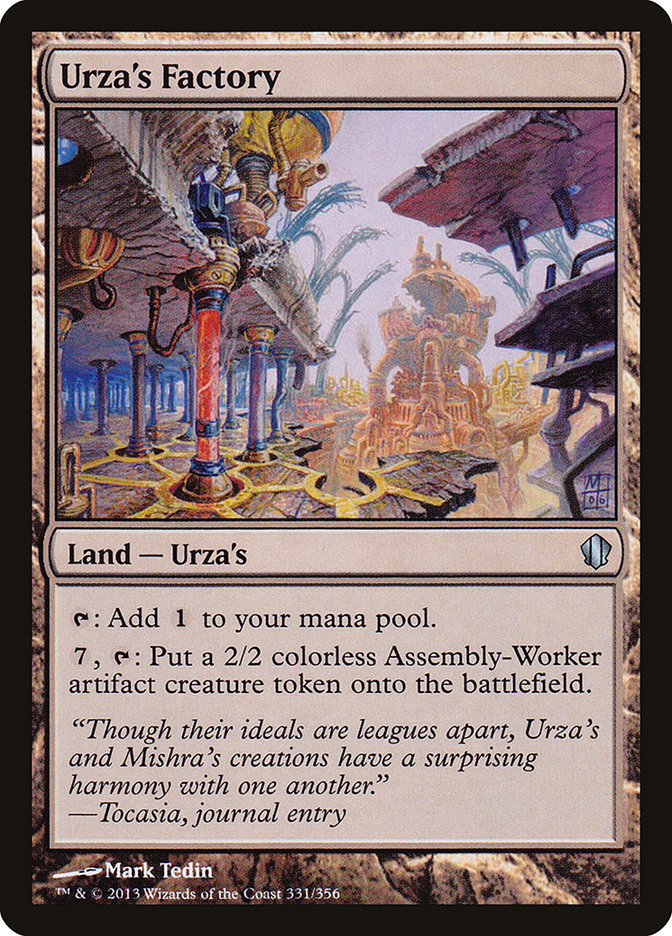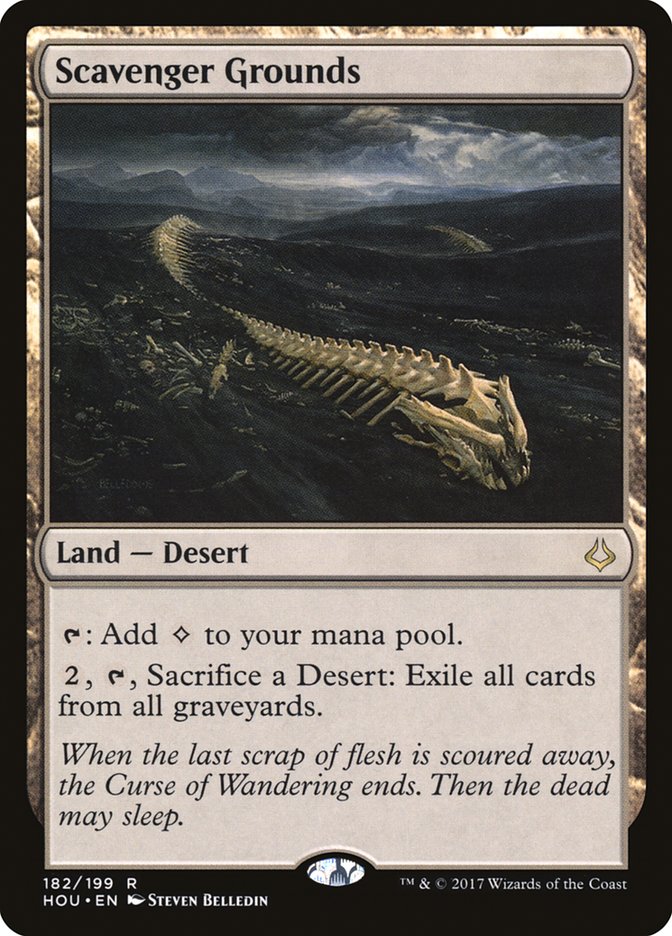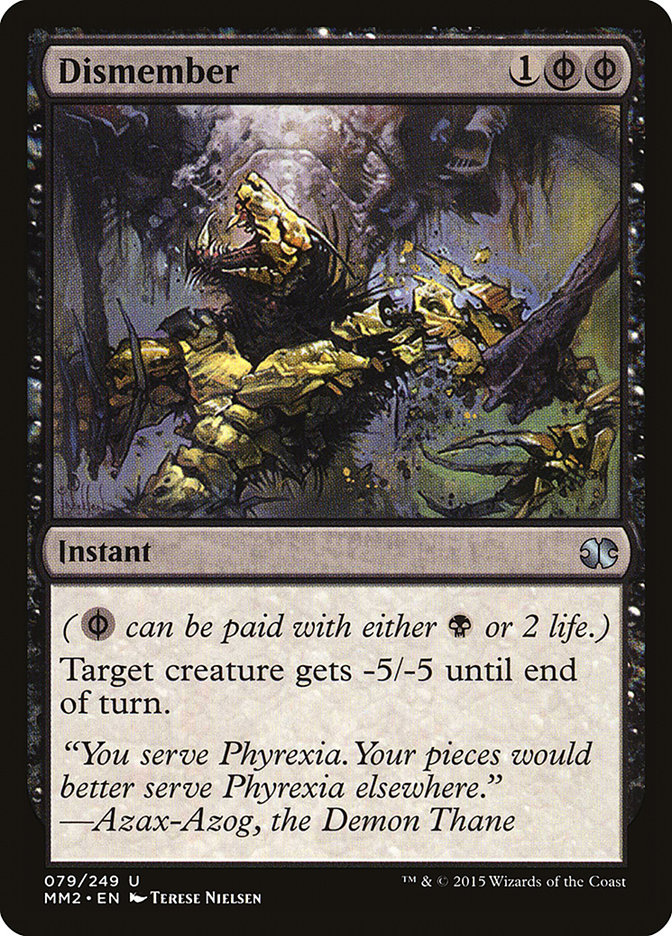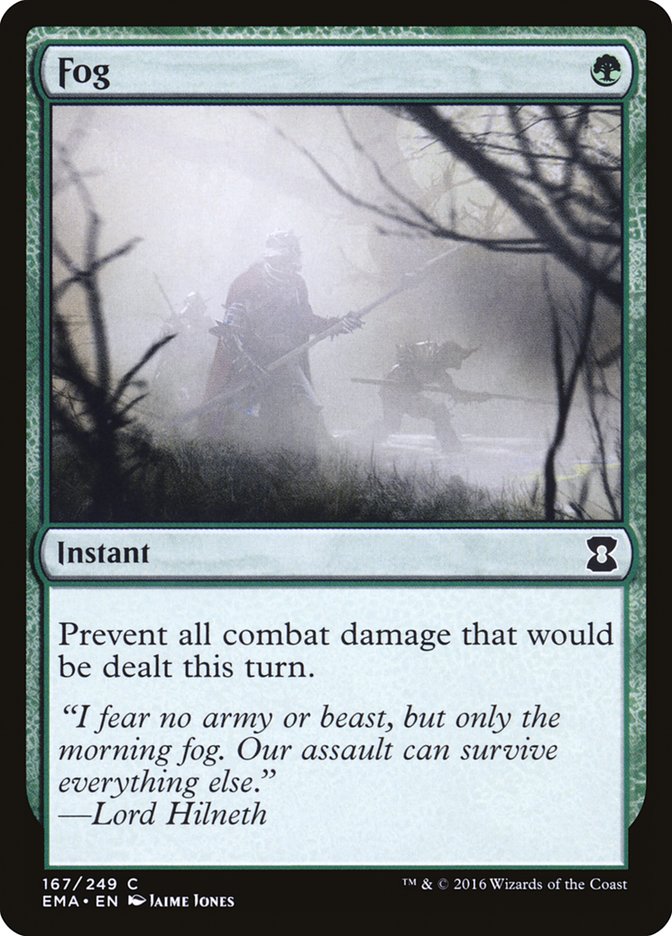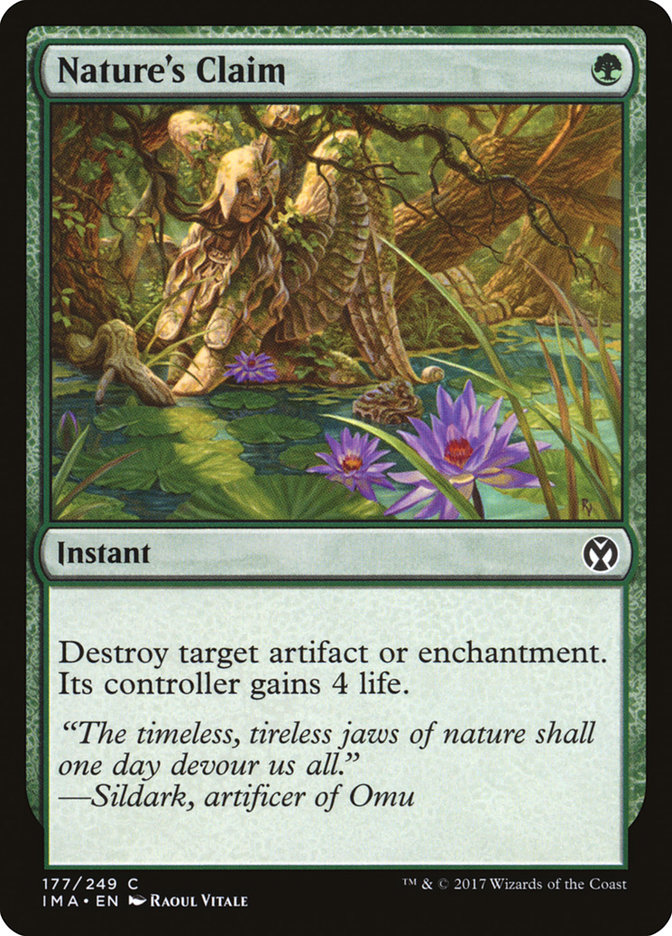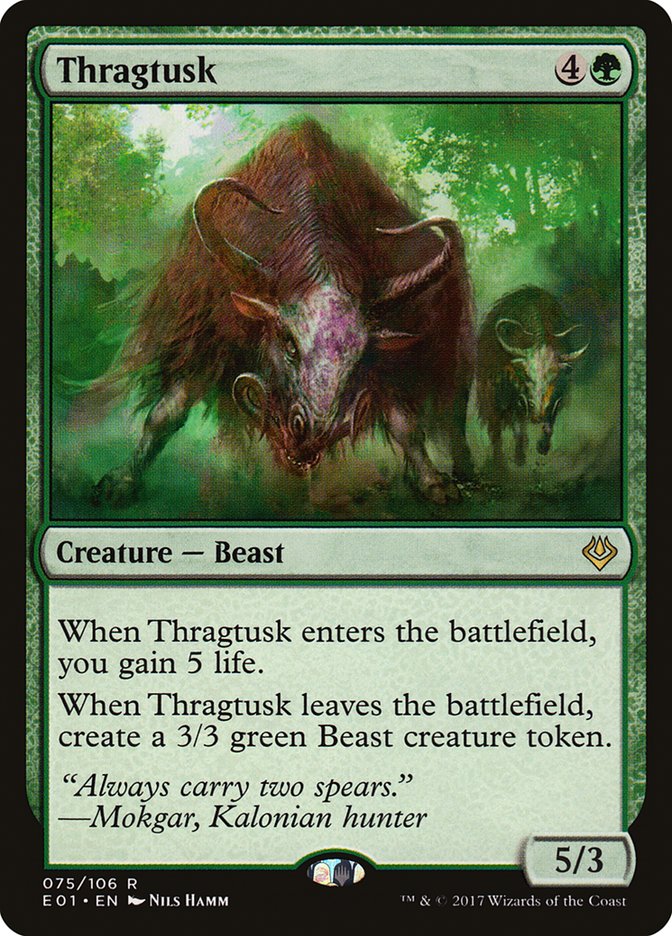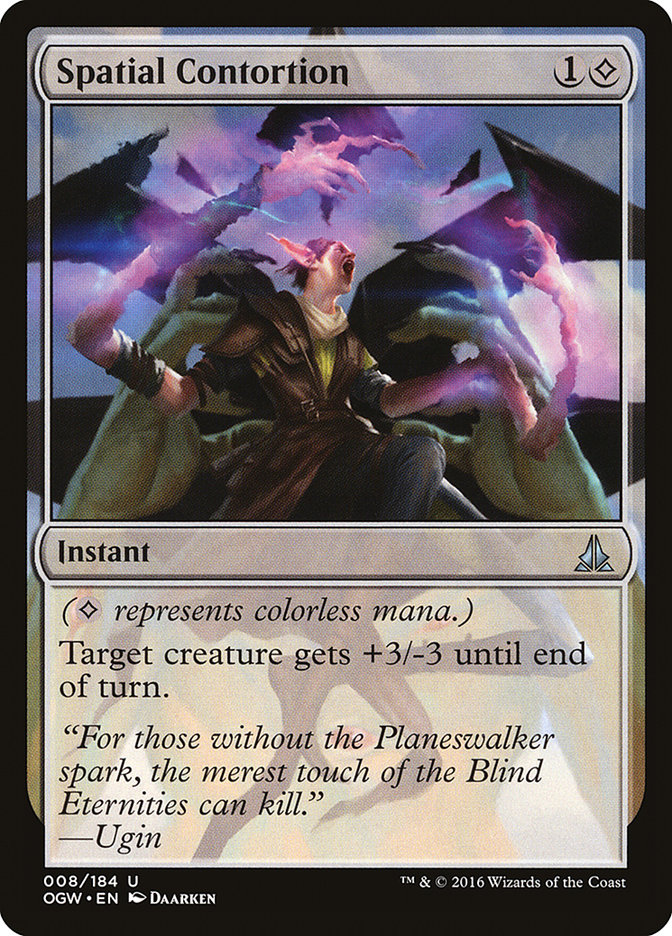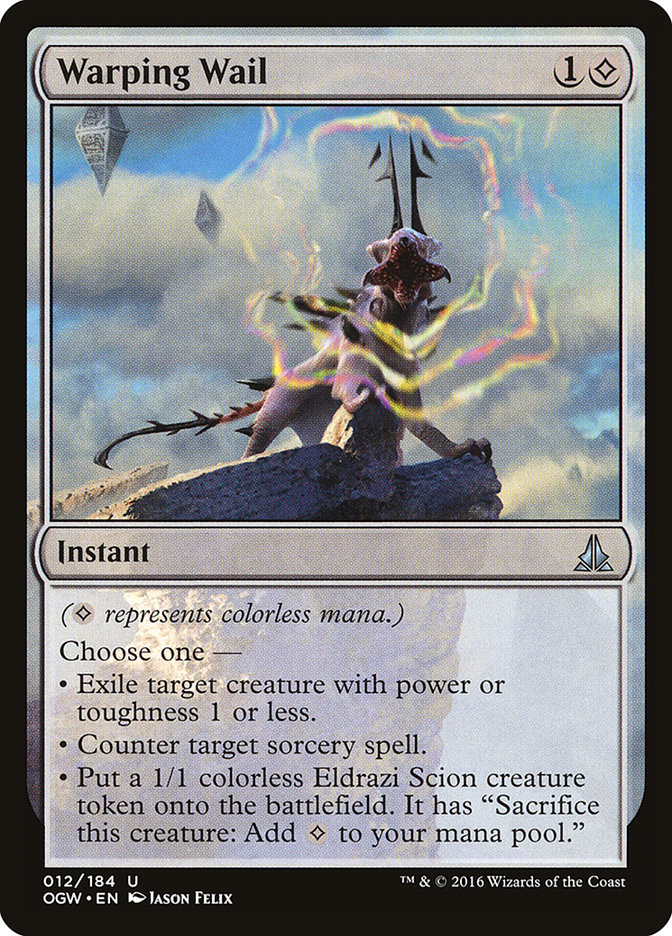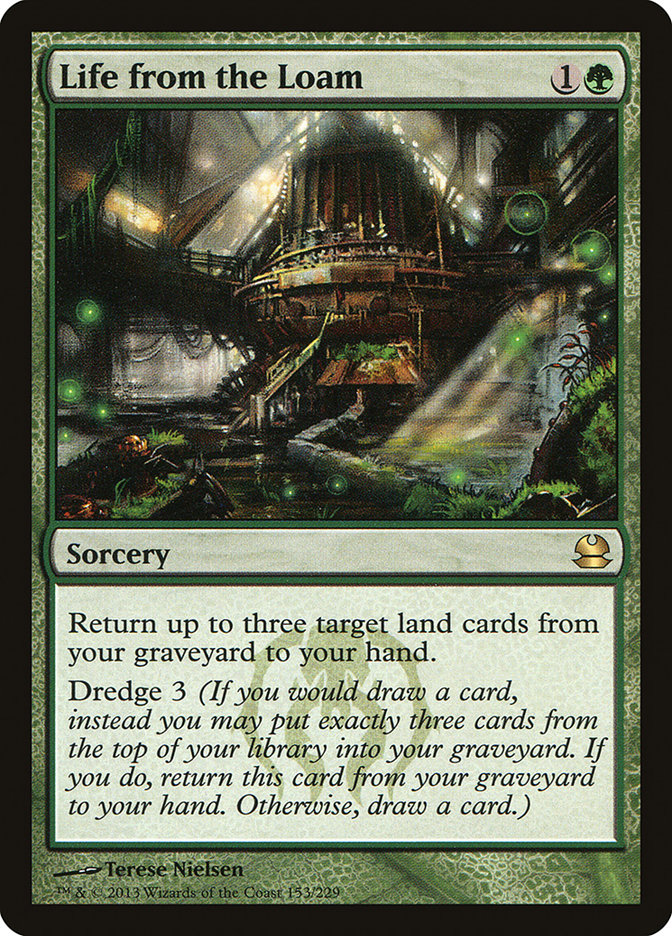After getting quickly destroyed in the Modern portion of the Season One
Invitational a couple weeks ago it felt fairly clear to me that now was not
the time to be playing my trusty Lantern Control deck. It’s all I’d really
played in Modern for the past eight months, and even as many Lantern
experts began to move away from the deck, I kept playing it, still
achieving decent results whilst the old adage of Modern being about playing
what you know rung clear in my head. Times change though, and Lantern’s
position in the metagame felt rough to me. With two days left until I flew
out to Las Vegas, I tried a couple other Modern decks to find a replacement
and found myself losing a lot mainly to a certain Golem staring across the
battlefield, daring me to sell my soul and register him.
I’d actually come close to seriously trying out Tron at points in the past
too, but it’s such an easy thing to talk yourself out of. You look at the
combo decks, the Burn decks, Aaron Barich’s trusty Glistener Elves, and
shudder at the thought of facing those decks for even a few rounds of a GP.
Something became very clear to me during testing though; Tron is great at
stealing percentage points it really shouldn’t. Sometimes you get paired
against Ironworks – an awful matchup – and proceed to cast turn three Karns
two games in a row and win anyway. Meanwhile your good matchups are either
particularly prevalent, particularly good for you, or both; I’m keen to
face any of Mardu, Jeskai, and Humans, all of which were big performers
going in to the GP.
It turns out assembling Tron can be about a bit more than just cracking
your Expedition Map on turn two to find you missing Urza’s land though, as
I found myself attempting to put together a 75 for the GP. Based on talks
with some Tron experts, and after reflecting on my own experiences in the
run to and during the GP, here are some conclusions I came to.
A key talking point in the run up to the Grand Prix was that whilst the
flex slots and sideboard of Tron do matter, the core 54 or so cards of the
maindeck provide so much raw power and consistency that they’ll ultimately
do a huge amount of carrying. This is why we’ve not seen the “perfect 75”
for Mono-Green Tron hammered out that everyone can just copy as we see
quite a few subtle variations between all of the six Mono-Green Tron lists
that made the Top 16 of GP Vegas. Max Mick’s list is maybe the closest
thing we have to some sort of aggregated Tron list, and even that has an
All is Dust as a strange maindeck inclusion (no doubt out of respect for
the prevalence of Humans).
Creatures (7)
Planeswalkers (6)
Lands (19)
Spells (28)

Manabase
So, lets work on the basis that you want your Tron list to be mono-green.
“It’s what is winning” isn’t necessarily a convincing argument on its own,
but you’d have to try really hard to get me away from registering a pile of
basic Forests – any time you can’t fetch a basic land off of your
opponent’s Ghost Quarter, Field of Ruin, or Path to Exile is enough of a
disaster that I think you need a really good reason to play a second color
right now, especially considering the basic Forests also help insulate you
against the Blood Moons out of decks like Mardu Pyromancer.
This is also just a result of how the Tron deck has evolved. Cards like
Kozilek’s Return and Fatal Push, whilst powerful, aren’t as important for
dealing with early creatures as they used to be, thanks to the printing of
Walking Ballista naturally providing the mono-green version of the deck
with built-in small-creature removal. I could see a world where Tron starts
to stretch for white mana at some point, as Krark-Clan Ironworks is both a
scary matchup and a rising force in Modern, and Rest in Peace sounds like a
powerful tool there, but I don’t think we’re quite at that point yet.
These are the four flex-slot lands among the six Tron decks to make the Top
16 of GP Vegas. Being mono-green has the advantage that you can justify
including some flex-slot lands, but each one you include has a very real
cost in that it eats away at some of the benefit of being mono-green in the
first place. Every list fits in a land-destruction land in a flex slot –
either Field of Ruin or Ghost Quarter – but each further flex-slot land
will eat into the potential five basic Forests you can fix in to your
manabase. With each additional flex-slot land being more punishing that the
one before it, I’m fairly hesitant to go below four basic Forests
personally, but clearly not all Tron players agree.
Creatures (9)
Planeswalkers (6)
Lands (19)
Spells (26)

I think Ghost Quarter is clearly better than Field of Ruin, though
including one of both is justifiable (as is, including two Ghost Quarter).
The efficiency of Ghost Quarter is just incredibly important, allowing you
to easily search for and activate it on turn three to keep your
mirror-match opponent off Tron, or threateningly holding it open against
your Affinity opponents’ Nexuses so that you can destroy whichever one they
equip.
In the run up to the GP, I also considered these two as viable options,
though decided against Geier Reach Sanitarium for the same reason I’m not
excited about the prospect of Urza’s Factory – Tron is better in top-deck
mode than almost any deck in Modern, and as a result, the number of games
where a land that can give you repeated value across multiple turns that
would actually end up mattering is fairly low. I think Horizon Canopy is
the best land you can include if you’re looking for something to tutor to
help you out in a top-deck war, though I would be at least a little bit
nervous of the life loss this card can incur if you draw it naturally.
I’m most excited about Scavenger Grounds, which I’ve not seen many Tron
lists touch for some reason. Admittedly the effect is a tiny bit redundant
alongside the maindeck copies of Relic of Progenitus that Tron decks often
play, but I’ve found it to be a powerful tool to be able to tutor for. At
the Grand Prix, it wiped out a Mardu Pyromancer player’s graveyard, robbing
them of Faithless Lootings (simultaneously shutting them off of future
Bedlam Revellers) in a top-deck war and threatened to exile a Krark-Clan
Ironworks player’s graveyard, should they ever try to combo. The fact that
it’s so good against some combo decks, like Storm, that might otherwise be
scary matchups, is another selling point. I think that people are really
sleeping on this card.
Removal
Walking Ballista has been a huge improvement for Mono-Green Tron, adding to
Tron’s long line of removal-threat hybrids that allow your deck to play a
controlling, interactive role whilst still be highly threat-dense (now more
so than ever).
As a result of Walking Ballista’s versatility, I’m fairly off Dismember.
Tron is to a significant extent a control deck, albeit an unusual one, with
its gameplan ultimately coming down to casting expensive sweepers and
slightly over-the-top spot-removal, and so for a long time Dismember was a
necessary evil simply so you could have some cheaper spot removal too. A
Ballista for one counter on turn two often provides some fine interaction
though against Infect creatures, robots, mana accelerants and any number of
Humans, but it costs you no life – important in your control deck – and
scales far better in to the late game than Dismember does.
Creatures (8)
Planeswalkers (6)
Lands (19)
Spells (27)

Joe Lossett, also seemingly very off Dismember, sees a different option as
your additional flex-slot “removal spell” with a single copy of Fog in his
maindeck. This is the wildest inclusion across any of the well-performing
Tron lists, and whilst I can’t speak to whether it’s good or not it’s
definitely interesting on a theoretical level. If you look at this
flex-slot removal spell as being purely about buying you time until Tron
has been assembled, it’s not hard to imagine Fog more reliably buying you
that extra turn than a Dismember or the third Walking Ballista would. Also,
with Infect being one of the toughest matchups for Tron and that deck being
on the rise both following Aaron Barich’s win at the Season One
Invitational and additionally in response to the amount of Tron and
Ironworks floating around, Fog gets even more appealing to punish opponents
who particularly want to jam a bunch of pump spells on to the table.
Sideboard
Some amount of the sideboard feels fairly set in stone. You need Nature’s
Claims against Stony Silences and Damping Spheres, whilst Thragtusks do
double duty against Blood Moon and Lava Spike. All but one of the Top 16
lists had Spatial Contortions in the sideboard, and I think it’s just
straight up the best sideboard removal spell you can have. Warping Wail is
a card I feel pretty strongly about the inclusion of too, even though it
hasn’t been universally adopted, simply because of its impressive
versatility. It’s both a slightly lackluster removal spell and a slightly
lackluster counterspell, but ensures that you can take as many poorly
positioned cards out of your deck as possible across various matchups.
This card, however, is one I personally just don’t understand and was
consistently underwhelmed with in testing to the point that I registered
zero copies at the Grand Prix and never regretted it once. I get that
Tron’s combo matchups aren’t great, but I’d be both hesitant to register
Tron in a metagame with a high density of combo decks and also think
Thought-Knot Seer doesn’t do nearly enough in those matchups either.
You know when the earliest you can cast Thought-Knot Seer is? Turn three.
If you assemble Tron on turn three and you don’t have a Karn Liberated in
hand to cast instead (which is what you really want in these matchups),
then you can cast your Thoughtseize-on-a-stick and present a clock that
will kill your opponent on your eighth turn. This clock doesn’t actually
matter though, as any world in which you are casting Thought-Knot Seer
against your combo opponent on turn three you have maybe a two-turn window
to find a Karn Liberated or Ulamog, the Ceaseless Hunger to close the game
before you die to them reassembling their combo and killing you anyway. I
get that these matchups aren’t great for you, but I simply don’t think
Thought-Knot Seer is the answer and would much rather have the extra
sideboard space and understand that I need to just mulligan aggressively to
hands that can either present fast hate-cards or turn three Karns.
Considering the prevalence of Tron, it’s pertinent to include some
sideboard cards for the mirror, and these are the three options we see in
the Top 16. Personally, having registered a Crucible of Worlds in my
sideboard for the GP, I’m fairly unwilling to touch that card again any
time soon as I believe it’s simply too slow in many games in the mirror. If
you sacrifice your Ghost Quarter on turn two or three, then Crucible of
Worlds doesn’t allow you to reuse that same Ghost Quarter until turn five,
leaving you dead to your opponents’ more resilient draws. Whilst Crucible
of Worlds may look good in midrange matchups, those matchups are already
favorable enough for you anyway that I’m not interested in dedicating
sideboard space to them. Besides, all those midrange decks are only going
to sideboard in Shatter effects against you anyways, which will
incidentally threaten to embarrass the Crucible.
Creatures (9)
Planeswalkers (6)
Lands (19)
Spells (26)

Jon Stern’s list features a sideboard Life from the Loam, which is
everything Crucible of Worlds wants to be. Like Crucible, I feel like it’s
a bit narrow in its applications, but it’s dramatically faster in the
mirror match, allowing you to Ghost Quarter your opponent on both turns
three and four (and five, and six, and…)
I’m totally sold on Surgical Extraction though. I think keeping a hand in
the mirror that leans entirely on the Ghost Quarter + Surgical Extraction
combo is perhaps a bit misguided, but as something to have access to in an
otherwise functional draw, it’s very powerful. In addition, it also serves
as valuable combo hate. It can’t come in against every combo deck, sure,
but having more interaction against Storm, TitanShift, or Ironworks can
only be a good thing.
Tron Assembled
Ultimately, I ended up going 11-4 in the GP, locking up Silver Pro status.
This is a fine result in itself, but speaks to the strength of Tron once
you consider that two of my four losses were the mirror match, and unless
we see a significant shift in how Modern looks, I have to imagine there’s a
very good chance I’ll be registering Tron at my next Modern event. After
the event, I changed two sideboard cards to make room for Surgical
Extractions, leaving me with this as my current list:
Creatures (9)
Planeswalkers (6)
Lands (19)
Spells (26)




